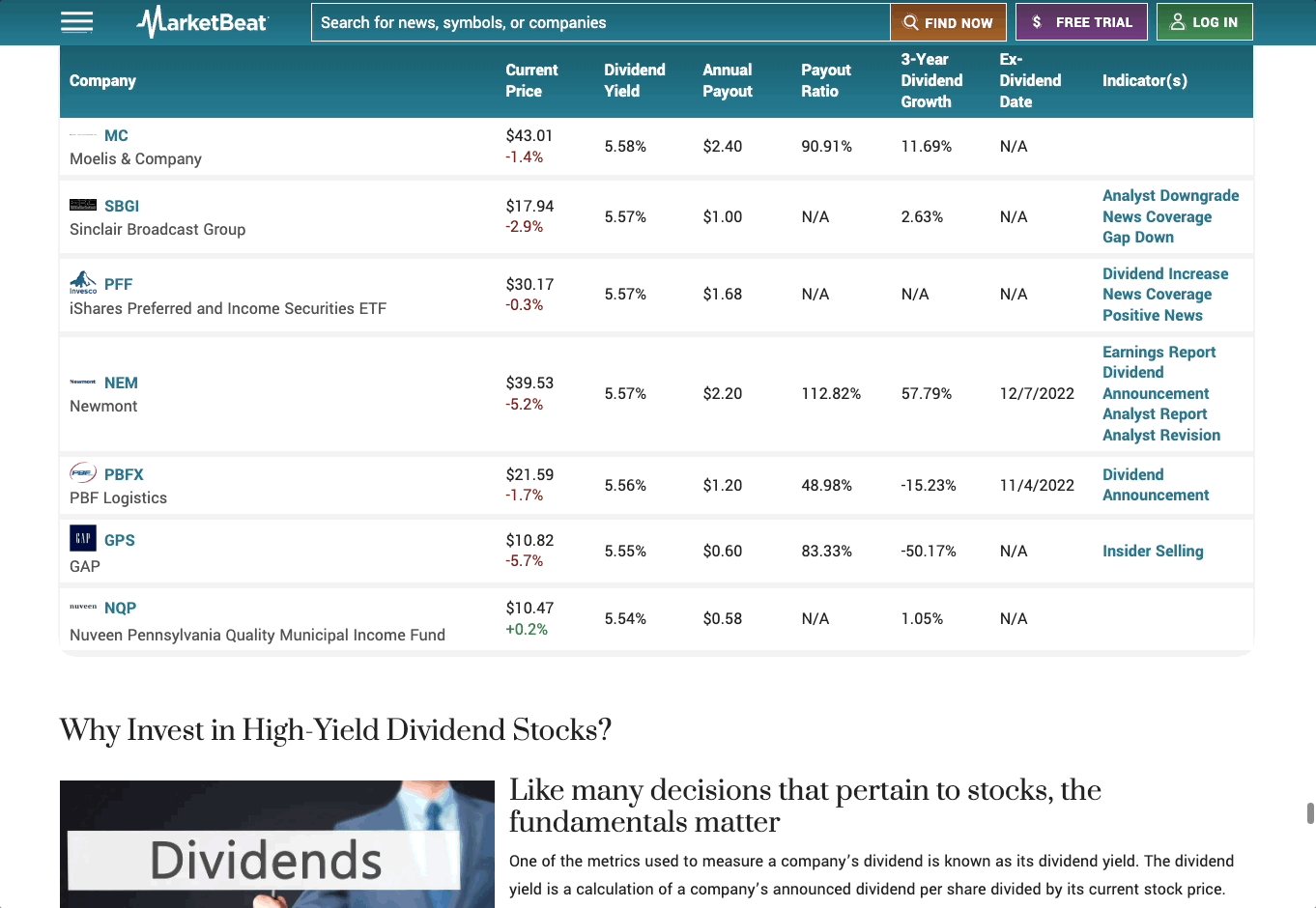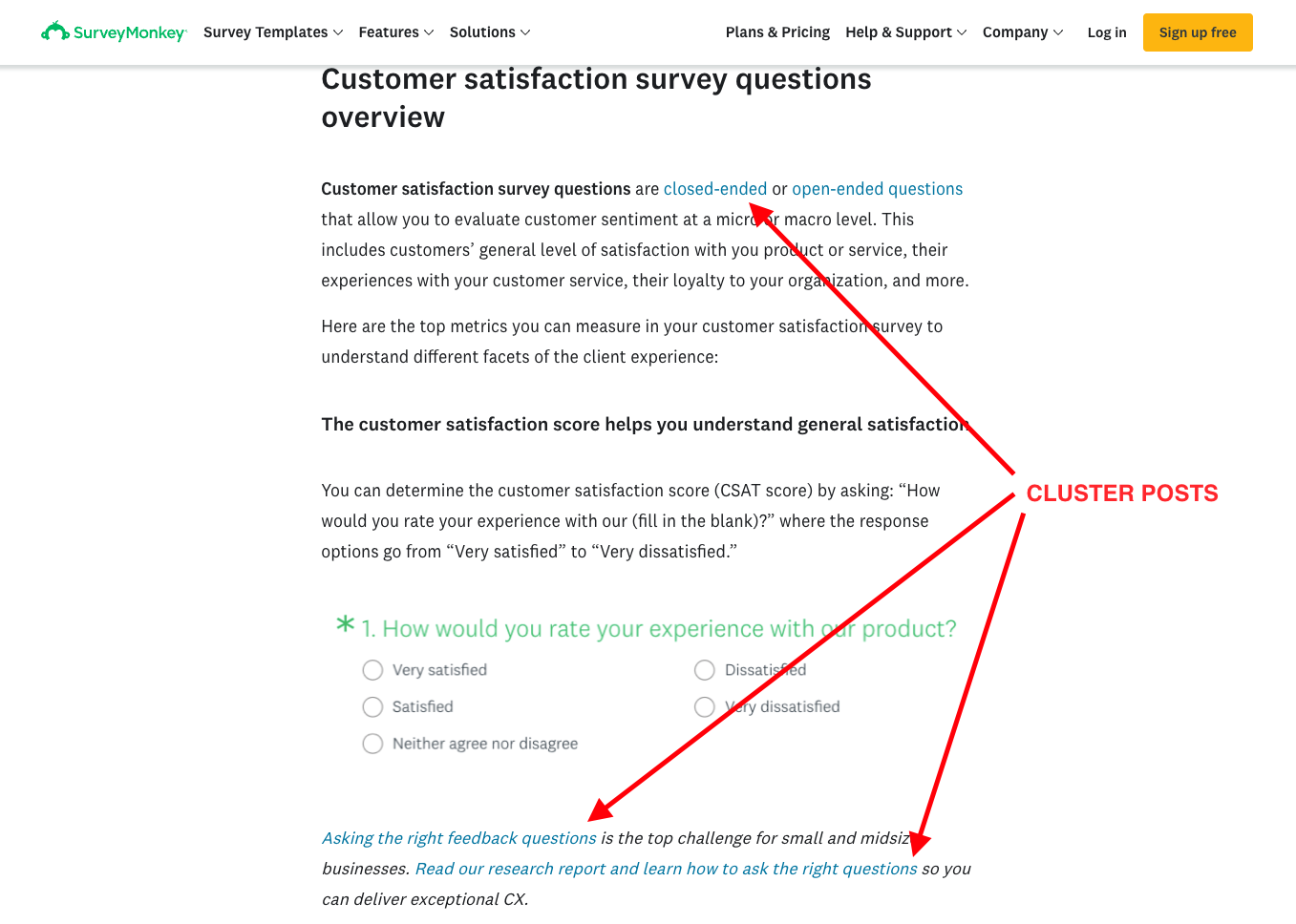Guest post by: David Hehenberger
Publishing high-quality content on your website is one of the most effective ways to market your business. It can help you reach the right audience, engage web visitors, inspire people to move through the sales funnel, and even help you retain customers and ensure the longevity of your customer relationships.
But here’s the thing: not all content is created equal. Yes, most resources will tell you to focus on the quality of the articles you publish. But not many will tell you that length also plays a crucial role in ensuring the effectiveness of your content marketing strategy.
If you look at the research around the ideal article and blog post length, you’ll discover that long-form content consistently outperforms its short-form equivalents.
One study found that long-form articles received 77.2% more backlinks and 56.1% more social shares.
Another discovered that publishing long-form content ranked better on Google, with the mean word count for a Google First Page result being 1,447.
And Orbit Media’s latest blogging survey discovered that bloggers who write 3,000+ word articles are 2.5x as likely to achieve great results.
Considering this data, it’s easy to conclude that investing in long-form content pays off.
But remember: making this type of content work for you isn’t just about achieving a “desirable” word count. In fact, some resources categorize every article exceeding 750 words as long-form, while others reserve the label for posts that are 3k, 5k, or even 10k words long.
So, if you’re looking for ways to elevate your current content marketing strategy with long-form articles, keep the following two things in mind:
- What counts as long-form content will depend on your brand, audience, and the resources being published in your industry.
- Not every single one of the strategies discussed below will drive value for your business. To get impressive outcomes, align your long-form content creation tactics with your product, target audience, and industry trends.
If you’re ready to roll up your sleeves and produce blog posts your audience will appreciate, here are the top reasons you need to start publishing long-form content, along with a few tactics to ensure you get it right.
Some Topics Warrant a Deep-Dive
One of the most prominent reasons you want to invest resources into long-form content creation is that complex topics deserve a detail-oriented approach.
After all, a short 500-word article cannot give your readers all the info they need on elaborate subjects. More importantly, glossing over such topics doesn’t just expose you to the risk of publishing (and paying for) content that delivers no value to your audience. It also opens you up to potentially hurting your brand’s credibility.
Imagine the following scenario:
A young investor who wants to generate a passive income lands on an article discussing high-yield dividend stocks. Seeing that they’re looking for fact-checked and trustworthy information, the reader’s primary concern is to ensure they’re reading a resource written by industry experts.
If all they see is a 10-point list of high dividend-paying companies and a 100-word introductory paragraph, the most probable scenario is that they navigate away from the website. Moreover, the interaction is likely to cause them to form a negative perception of the publisher, seeing that the article exhibits a shallow approach to a complex subject.
However, there’s an easy way to fix the negative outcome simply by expanding the article.
If the publisher delivers enough info to prove their expertise and shows that they want to share their insider knowledge, the list post stops being a generic piece of content. Instead, it turns into a long-form article that’s a value goldmine — both for the reader and the publisher.
Considering this, it becomes obvious why producing a long-form article about high-yield dividend stocks, like the one shown below, pays off. Note how the resource includes an in-depth explanation of the concept it discusses, solid advice for new investors, and a list of additional resources readers can explore to ensure maximum value from their investment.

Source: marketbeat.com
Google (Sometimes) Loves Long-Form Content
The second reason you need to invest in more long-form content for your business website is that Google loves wordy articles.
In addition to the already-mentioned fact that longer articles rank better on SERPs, various research studies have discovered that:
- Articles between 2,250 and 2,500 words earn the most organic traffic.
- 57% of content marketers consider long-form content the most effective format for generating backlinks.
- Posts that are more than 1,000 words long get more than 2x more engagement than their short-form equivalents.
Furthermore, don’t forget that long-form content appeals to Google RankBrain through:
- Relevance (providing sought-after info about a topic).
- Quality (having sufficient space to discuss all aspects of a subject).
- User satisfaction (engaging people to interact with the post, read through it till the end, and maybe even click through to other pages on the same website).
Considering all this, it quickly becomes clear why investing in long-form blog post production represents a superb way to support your SEO strategy.
Long-Form Content Enables High-Quality Repurposing
As you well know, content marketing is not a spray-and-pray tactic that automatically delivers results. Yes, some posts manage to go viral thanks to a combination of topic choice, timing, and a lot of luck.
However, for most marketers, virality is not something they can count on to reach their goals. Instead, they must continually work to ensure that every published post achieves its maximum ROI. And that objective is traditionally accomplished through distributing and updating old posts at predetermined intervals and creating new ones to keep engaging existing audiences.
But, with long-form content, there’s one additional strategy for getting the most out of your budget: repurposing, that is, re-using it in a new format to help it reach a wider audience and extend its lifespan.
Now, instead of equating the practice of repurposing with recycling, think of it this way:
You’ve put time and effort into creating an in-depth, valuable resource. So, if you can take snippets of that creation and design spin-off content, you can effectively reach people searching for specific information related to your original post. Plus, you can do this without making them read through thousands of words about something they already know.
The repurposing strategy doesn’t just allow you to get the biggest bang for your buck. (After all, repurposing content is relatively cheap.). It also plays well with the fact that people’s attention spans are getting shorter by the year, and most internet users want resources that will answer their questions quickly and efficiently.
For inspiration on repurposing your long-form content, you can check out this guide on how to use Google Flights.
In its original form, the post is a 4,000-word article that covers every minute detail regarding booking airline tickets on a budget. However, knowing that most people aren’t prepared to spend between 15 and 20 minutes reading such a resource, the brand transformed the guide into an 8-minute YouTube video that’s not only informative but successful too, with 450k views, hundreds of comments, and more than 5.7k likes.
Source: youtube.com
Long-Form Content Supports Readers in the Decision Stage of the Buyer’s Journey
Aligning content with your audience’s needs and position in the sales funnel is a must. And, if you’re targeting people close to making a purchasing decision, long-form content allows you to educate them and gently nudge them toward a conversion without alienating them with a hard sales pitch.
The reason long-form content works so well when targeting consumers in the decision stage of the buyer’s journey is that it provides them with multiple benefits:
- The length provides readers with all the necessary info they need to make the right choice when deciding what products to invest in.
- The deep dive builds brand credibility and generates trust, positively affecting purchase intention once they reach the final stage of the sales funnel.
- By enriching long-form articles with visuals, product comparison tables, and interactive elements, you can make the decision-making process easy and intuitive for your target audience, consequently boosting the chances of them converting into customers of your brand.
If you check out this 2022’s Best Medical Alert Systems guide, you’ll see that the 5,000-word article covers every nook and cranny of a nuanced topic.
On the surface, the article presents readers with short reviews of the five most popular medical alert systems on the market, along with images, pros and cons, ratings, pricing information, and quick-buy links. But, if you scroll down, you’ll see that the resource does much more.
In addition to being a traditional top-5 product list, this article also informs readers about the system behind product rankings. Moreover, it:
- educates readers about the way a medical alert system works
- presents ways users can get additional protection with various accessories
- compares in-home systems with mobile GPS-enabled devices
- explains the difference between calling 911 and a medical alert system operator
- includes a list of sources to support any information presented in the article
Looking at this list of article sections, it’s evident just why a short-form blog post could never provide the same user experience as this type of long-form article.

Source: medicalalertbuyersguide.org
Long-Form Content Makes for Great Pillar Posts
One of the best ways to establish your brand’s authority is to invest in versatile content that covers all the nooks and crannies of a topic related to what your business does.
But while building up a library of resources providing in-depth insights into dozens of aspects of a particular subject is an excellent way to position your brand as an expert, it’s also a time-consuming strategy that can require a hefty budget.
This is why, when starting out, your best bet is to create pillar posts — in-depth blog posts that cover all aspects of a specific topic. When you publish pillar content, you’re giving web visitors a comprehensive overview of a subject that’s likely to answer their questions and rank high on SERPs.
However, the fact that a pillar post is just one article still leaves sufficient room for your content team to produce and publish cluster pages, which take a deep dive into a particular part of a topic, then link back to the original pillar.
This strategy, although seemingly intricate, makes for a super-easy and affordable way to create content that ranks well, drives lots of organic traffic, establishes your brand’s authority, and encourages readers to stick around on your website.
But, you may ask, what does long-form content have to do with pillar posts?
Well, the answer is relatively straightforward:
Creating a pillar post that does a topic justice has to have a bigger word count. For instance, if you check out SurveyMonkey’s guide to Customer Satisfaction Survey Questions, you’ll see that the brand has to cover:
- An introduction to the purpose and nature of customer satisfaction surveys.
- The types of survey questions appropriate for this type of questionnaire.
- The most common mistakes when putting together customer satisfaction surveys.
- Links to popular customer satisfaction survey templates (which act as conversion magnets).
The result of doing all of this is a 1,700-word article. It adequately covers a topic, links to further explanations regarding specific concepts (like open and closed-ended questions), and ranks high on Google. Furthermore, the post successfully shows that SurveyMonkey is a reliable provider of information regarding the questionnaire-building process and a brand that makes a good product its target audience can count on to solve their pain points.

Source: surveymonkey.com
Long-Form Content Enables Natural Product Mentions
When approaching the content-creation process, the most important thing you need to do is determine what pain point you’re trying to solve for your readers.
By aligning your articles with your target audience’s search intent, you’re ensuring higher user satisfaction and boosting the chances of those people forming a positive perception of your brand.
But, there’s one problem with optimizing content for search intent: it can make it next to impossible to nudge readers towards a conversion without coming off as pushy.
Fortunately, long-form content removes this problem. Seeing that longer blog posts cover subjects in detail, they provide more opportunities to mention your products in a natural way that doesn’t seem like a forced product pitch.
Moreover, thanks to the word count, a long-form blog post could allow you to include more than one product mention without risking the loss of the resource’s informative nature and turning your hard work into an alienating product commercial your readers (and Google) will hate.
A quick look at this guide to pre-workout ingredients and supplements will allow you to see how one brand squeezes a dozen product links into a single article.
Thanks to a fact-based approach, the end result isn’t a sales-oriented article but an informative resource that justifies every single product mentioned with a link to a peer-reviewed study (see the screenshot below).
Plus, overt product mentions (that include images and overviews of their main benefits) are reserved for the end of the article, where readers have gathered the information they need and are naturally ready to move on to the next stage of the buyer’s journey.

Source: transparentlabs.com
Long-Form Content is Great for Establishing a Market for Your Product
For some brands, especially those operating in niche markets, creating interest in their products and services may pose the most significant challenge they face.
After all, how are you supposed to get people to purchase your solutions if they don’t even know such solutions exist? Well, this is something that long-form content can help you do.
By producing and publishing long-form articles that address your audience’s pain points, you can make it easier to sell an unconventional product for which there isn’t an established market.
Of course, when justifying the reason for your product’s existence, you will have to go into lots of detail. Show that you understand your target audience’s wants. Demonstrate how your solution could be the perfect choice for their needs. Specify the unique advantages of the product you offer (that set you apart from more conventional alternatives). And most importantly, do your best to inspire your readers to try your solutions.
A quick look at GILI Sports’ How to Paddle Board (SUP) for Beginners post shows how this brand uses an in-depth guide to introduce its audience to a new type of SUP — the inflatable board. Here, it points out that its product is superior to its more traditional counterparts, not just because it is easier to store and transport but because it’s more durable as well.

Source: gilisports.com
Long-Form Posts Make Great Reference Materials
Finally, as you explore reasons for publishing more long-form content on your website, remember that people often bookmark helpful articles when they know they’ll need the presented info in the future.
Naturally, they’ll be more likely to do this with in-depth posts that answer all their questions and contain lots of helpful info readers may not have even known would come in handy.
In such cases, the biggest win for your brand isn’t just the way long-form content builds authority for your business. The most significant benefit comes in the form of the mere-exposure effect, which causes people to prefer brands they are the most familiar with.
Our overview of Slack Slash Commands for boosting productivity is an excellent example of a long-form post envisioned as reference material that people are likely to bookmark.
Sure, it doesn’t necessarily focus on what we do at Flamingo, but that was never our objective with the post. As a piece of content, it still achieves the effect of positioning our business as a Slack authority, making it much more likely that (once readers realize they need a Slack leave management solution) they’ll invest in Flamingo’s product.

Source: helloflamingo.com
Getting Started With Long-Form Content
Whether your goal is to reach your target audience, acquire more customers, minimize content marketing costs, or position your business as a credible and authoritative entity, you should definitely invest in long-form content.
The strategies discussed in this guide are all excellent starts.
However, to ensure you’re doing them right, make sure you first assess your product and market, understand what your buyers want, and look back to what worked for your business in the past. These elements will help you decide whether you should skip any of the tactics mentioned above and, more importantly, help you pick the ones with the strongest potential to lead to impressive results.
About the author:

David Hehenberger is an accomplished SaaS entrepreneur and coffee enthusiast.
He’s the founder of Flamingo, a leave-management tool for people-focused teams.

